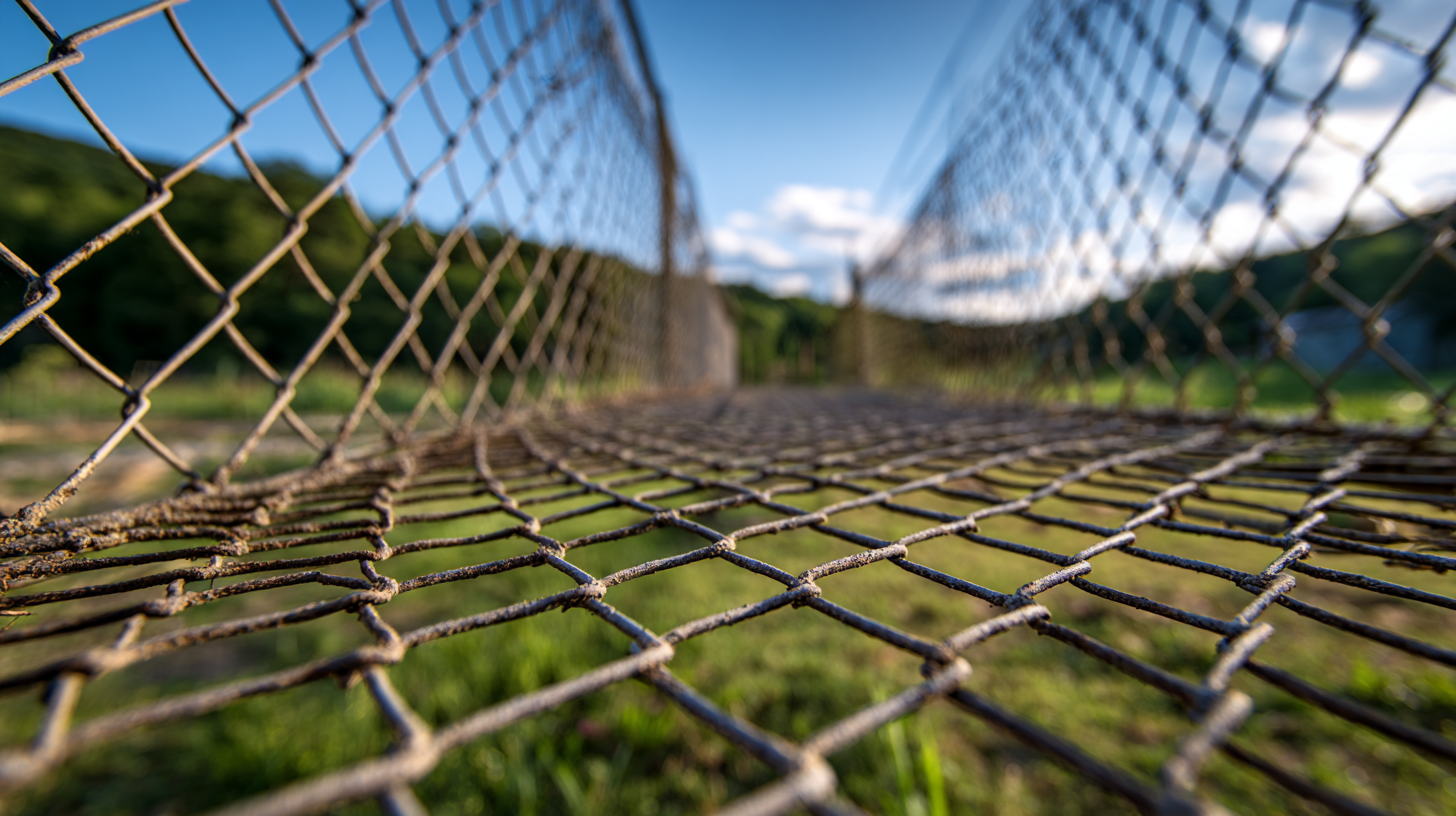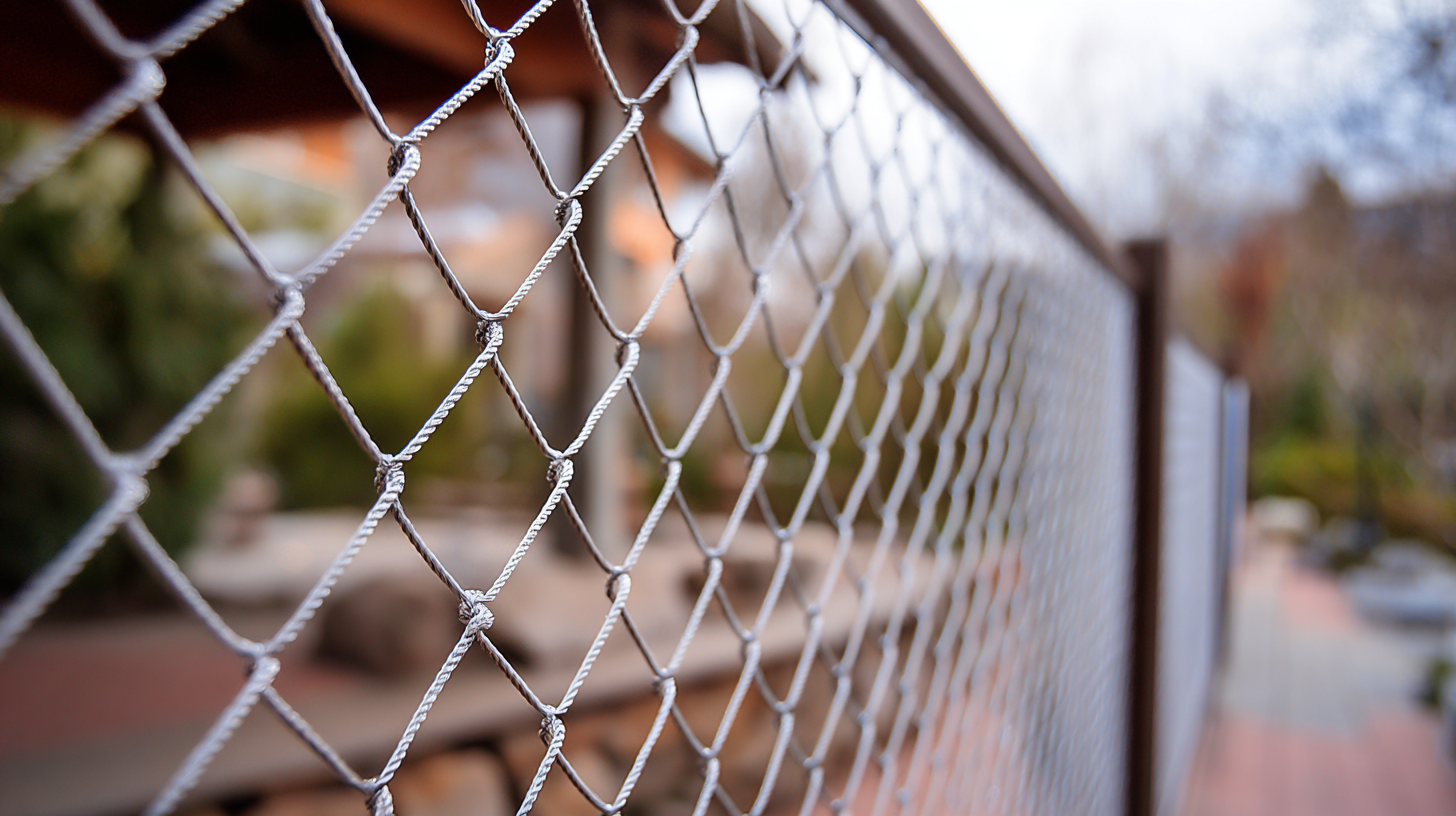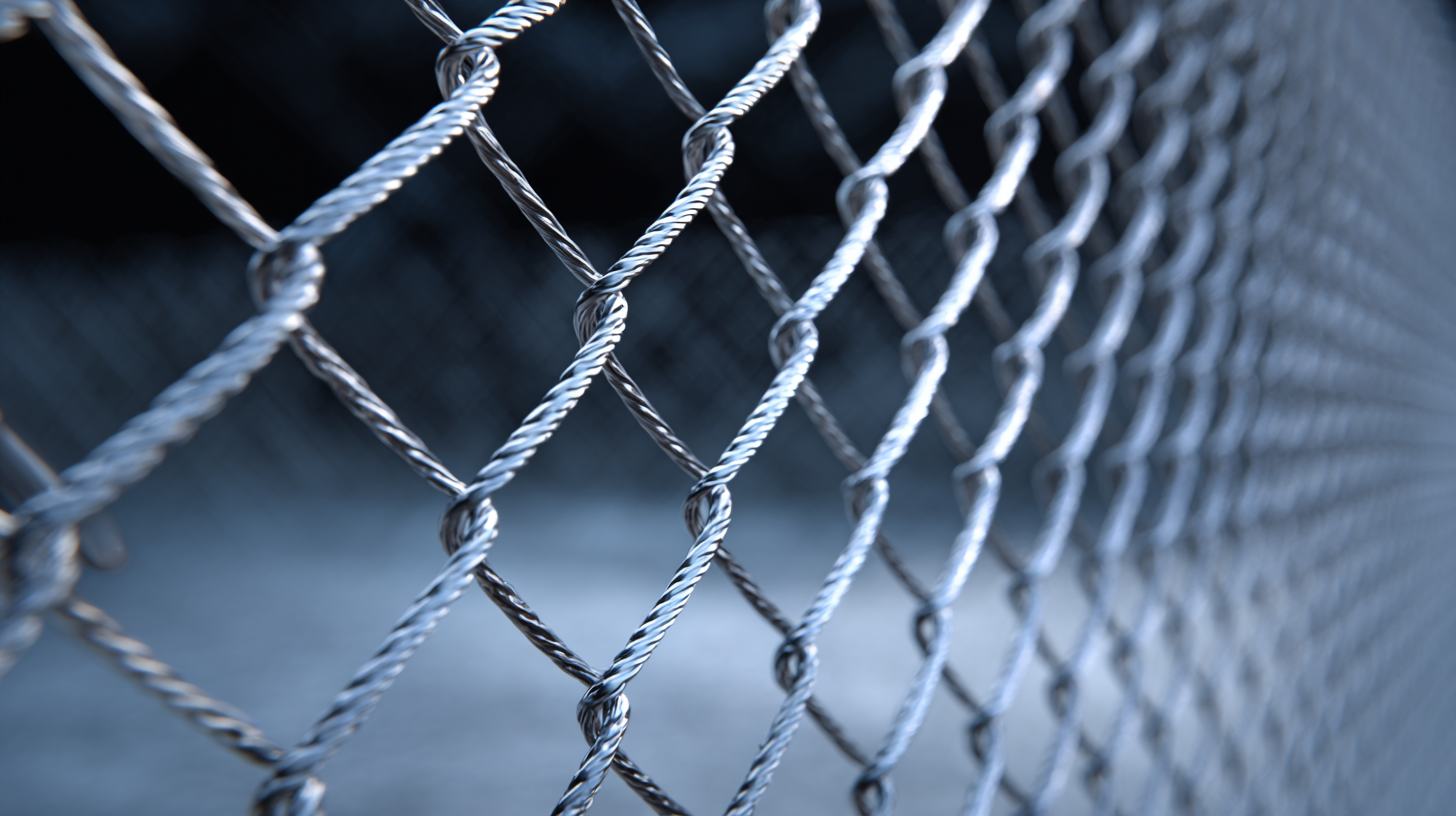Blog
- Home
- Blog
The Future of Best Fence Netting A Comprehensive Analysis of Market Trends Towards 2025
As we look toward 2025, the market for fence netting is poised for significant transformation, driven by evolving consumer preferences and technological advancements. A recent report by MarketsandMarkets projects the global fencing market to reach $36 billion by 2025, highlighting a growing demand for high-quality, durable materials.
 Fence netting, a crucial component in livestock management and garden protection, is increasingly favored for its versatility and resilience. Additionally, the surge in urban gardening and sustainable farming practices has amplified the relevance of fence netting as a protective barrier against wildlife while maintaining aesthetics. This comprehensive analysis delves into the emerging trends in the fence netting market, considering factors such as material innovation, environmental impact, and shifts in regulatory standards, to provide a clear picture of its future direction.
Fence netting, a crucial component in livestock management and garden protection, is increasingly favored for its versatility and resilience. Additionally, the surge in urban gardening and sustainable farming practices has amplified the relevance of fence netting as a protective barrier against wildlife while maintaining aesthetics. This comprehensive analysis delves into the emerging trends in the fence netting market, considering factors such as material innovation, environmental impact, and shifts in regulatory standards, to provide a clear picture of its future direction.
Understanding the Different Types of Fence Netting Products Available in the Market
When exploring the diverse landscape of fence netting products available in the market, it’s essential to understand the various types that cater to different needs and preferences. Among the most popular options are plastic and metal netting. Plastic netting is lightweight, versatile, and resistant to rust, making it ideal for garden applications and temporary installations. Its flexibility allows for easy handling and installation, while its durability ensures long-lasting performance.
On the other hand, metal fence netting is recognized for its strength and security, often used in more permanent fencing solutions. With options like welded wire and chain link, these materials are perfect for enclosing larger areas where safety is a priority. The rigidity of metal netting makes it resilient against environmental factors, ensuring it can withstand the test of time. Additionally, advancements in coatings and treatments have enhanced metal netting’s resistance to corrosion, expanding its utility across various applications. As consumers increasingly prioritize durability and security, understanding these differences is vital for making an informed choice in the evolving market.
The Future of Best Fence Netting A Comprehensive Analysis of Market Trends Towards 2025
| Type of Fence Netting | Material | Durability (Years) | Market Share (%) | Projected Growth (2023-2025, %) |
|---|---|---|---|---|
| Plastic Netting | Polyethylene | 5-10 | 35 | 5 |
| Metal Netting | Galvanized Steel | 15-20 | 40 | 3 |
| Composite Netting | Wood-Plastic Composite | 10-15 | 20 | 7 |
| Electric Netting | Copper/Aluminium | 10 | 5 | 8 |
| Garden Netting | Polypropylene | 3-5 | 25 | 10 |
Key Features and Benefits of Plastic Fence Netting for Garden Use
The rise in popularity of plastic fence netting for garden use is driven by its versatility and practicality. This material offers effective protection against various animals that threaten gardens, such as rabbits, deer, and birds. According to recent market analysis, demand for garden fencing solutions is expected to grow at a CAGR of 5.1% from 2023 to 2025, indicating a strong shift towards more sustainable and adaptable garden fencing options such as plastic netting.

When choosing plastic fence netting, look for features such as UV resistance and flexibility, which make installation easier while ensuring durability. In addition, the lightweight nature of plastic netting allows for simple modifications as garden layouts change over time.
Tips for Effective Use:
1. Height Matters: Ensure your fence is tall enough to deter larger animals; generally, a height of at least 6 feet is recommended for deer.
2. Secure the Base: To prevent burrowing animals from accessing your garden, bury the bottom of the netting into the ground or use stakes to secure it.
3. Add Visual Deterrents: Enhance the effectiveness of your netting by incorporating visual deterrents, such as reflective materials, which can help keep animals at bay.
Implementing these strategies will significantly bolster your garden's defenses while reaping the benefits of using durable plastic fence netting.
The Role of Metal Fence Netting in Livestock Protection and Secure Fencing
The role of metal fence netting in livestock protection and secure fencing is crucial as we look towards 2025. As more farmers and property owners recognize the necessity of safeguarding their livestock from predators and ensuring their premises are secure, metal fence netting has emerged as a favored solution. Unlike traditional wooden fences, metal netting offers durability and resilience, making it an ideal barrier that stands up to the elements and prevents unwanted intrusions.
To enhance the effectiveness of metal fence netting, consider the following tips: First, ensure that the netting is installed at an appropriate height to deter livestock from escaping and to prevent predators from gaining access. Additionally, using galvanized metal netting will enhance its longevity and resistance to rust, significantly reducing maintenance costs over time. Lastly, regular inspections can help identify weak spots or damage, allowing for timely repairs that keep your livestock safe.
Investing in quality metal fence netting not only protects your animals but also provides peace of mind. As market trends indicate a growing preference for reliable and sustainable fencing solutions, prioritizing metal fence netting in your fencing strategy will pay dividends in both security and livestock welfare.

Comparative Analysis of Fiberglass vs. Traditional Fence Netting: Pros and Cons
When considering fence netting options for agricultural and garden use, two popular choices emerge: fiberglass and traditional materials. Fiberglass fence netting has gained traction due to its lightweight characteristics and resistance to rust and corrosion. This makes it an excellent choice for environments with high moisture levels. Moreover, fiberglass offers superior durability, often lasting longer than traditional solutions, which tend to wear down over time, especially under harsh weather conditions.
On the other hand, traditional fence netting, such as wire or plastic, presents its own advantages. Many users appreciate the affordability and widespread availability of conventional materials. Traditional netting is often easier to install and can provide immediate structural benefits for temporary enclosures. However, it may require more maintenance over time, particularly in terms of checking for wear and potential rust. Each option has its pros and cons, making the selection process dependent on specific needs and contexts, highlighting the importance of understanding these differences as we move towards 2025 and beyond.
The Future of Best Fence Netting: Comparative Analysis of Fiberglass vs. Traditional Fence Netting
This chart illustrates the comparative advantages and disadvantages of fiberglass and traditional fence netting based on market trends and consumer preferences leading to 2025.
Future Innovations in Fence Netting Technology and Their Market Implications by 2025
The future of fence netting technology is poised for significant transformation by 2025, driven by innovations aimed at enhancing
environmental sustainability and operational efficiency.
Recent trends suggest a growing market shift towards eco-friendly materials, with
projections indicating that the global fence netting market could reach a valuation of $1.2 billion by 2025, reflecting a compound
annual growth rate of 5.2% (source: Industry Research Report 2023). This shift is largely attributed to increasing regulatory pressures
and consumer demand for sustainable products, prompting manufacturers to integrate advanced materials that reduce environmental impact.
Moreover, advancements in smart technology are set to revolutionize the fence netting landscape, enabling features such as integrated sensors
for real-time monitoring and maintenance alerts. This integration of IoT technology could enhance security applications,
making fence netting not only a barrier but also an intelligent solution in agricultural and residential settings. Today, approximately 60% of new innovations in
this sector prioritize durability and technology, forecasting a dynamic marketplace where innovation and sustainability converge to
meet the needs of modern consumers. With the convergence of these trends, the future looks promising for both the industry and its ecological footprint.
